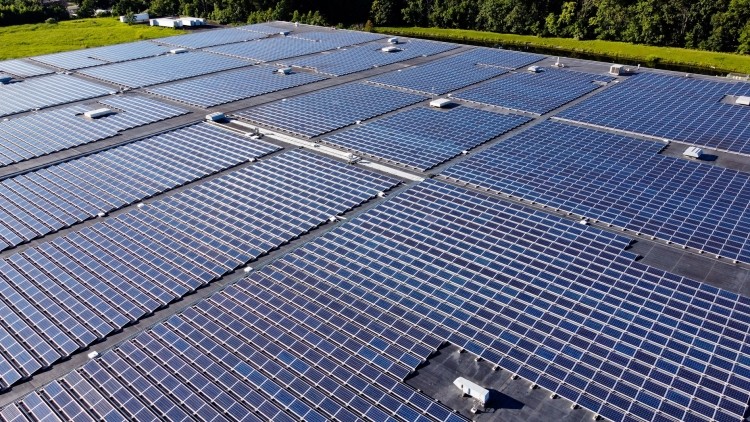L'Oréal USA achieves carbon neutrality four years early

The carbon neutrality includes L'Oréal USA manufacturing and distribution facilities, administrative sites, and research and innovation sites.
"L'Oréal's sustainability ambition is a transformational effort that has touched every department, becoming a source of pride, inspiration and education for all our 11,000 U.S. employees," said Stéphane Rinderknech, President & CEO, L'Oréal USA.
“Our brands and products are some of the most recognizable in the world, and more than 2 out every 3 products we sell in the United States are manufactured here. Our customers can be proud their products are made in facilities that use 100% renewable energy. While we are proud of these achievements, we know this is not enough to meet the moment we are in today and must push ourselves ever farther to meet the climate crisis head-on.”
Strategy
The US subsidiary said it had achieved carbon neutrality for Scopes 1 and 2 emissions via:
1) Energy Optimization
Reducing energy consumption, ranging from a switch to LED lighting to more specialized equipment such as high-efficiency air compressors and vacuum pumps.
In 2016, L'Oréal USA joined the U.S. Department of Energy's (DOE) Better Buildings, Better Plants program in an effort optimize energy reductions. Through this program, L'Oréal USA gained access to DOE's performance measurement tools, energy analytics, and experts to identify new opportunities for energy savings, as well as provide insights and best practices with the DOE to the greater benefit of manufacturers nationwide.
2) Direct Renewable Energy Projects
Seventy percent of L'Oréal USA's sites have on-site renewable energy projects. Since 2005, the company has installed more than 50,000 solar panels across the country totaling 57 miles.
L'Oréal USA built the largest commercial solar array in Kentucky at its Florence Haircare manufacturing facility, which provides 1.4MW of power through 4,140 solar panels. This 686,000 square foot plant, is the company's largest manufacturing site in the U.S. and its largest worldwide by tonnage produced.
L'Oréal USA was also one of the first major corporations to commit to solar energy in Arkansas, where it built the third largest solar array in the state in 2017. The 3,600 solar panel installation now provides 1.2 MW of renewable energy for its 450,000 sq. ft. factory in North Little Rock, one of the company's premiere cosmetics manufacturing plants globally.
Finally, L'Oréal USA installed solar panels at its Berkeley Heights office in 2012. What was already a LEED Gold certified building, the new solar project provided renewable energy for 60% of the office's energy needs, as well as electric vehicle charging stations for employees.
3) Locally Sourced Renewable Energy Certificates (RECs)
To make up the difference between on-site solar capacity and usage, L'Oréal has strict parameters for the purchase of RECs. All certificates must be locally sourced to ensure the company is driving systemic change through renewable energy expansion in the local communities in which it operates. RECs must be attributable to a local or semi-local renewable energy project close to the site which uses it.
4) Renewable Natural Gas (RNG)
To address the company's gas usage, L'Oréal USA sites procure RNG from landfill gas projects in Texas and New York that capture and convert methane produced from the natural decomposition of organic materials. These projects turn an otherwise wasted resource into pipeline-quality RNG that displaces the use of fossil-based natural gas.
L'Oréal for the Future
The next phase of the global beauty leader's sustainability ambition, called L'Oréal for the Future, was launched in June 2020, and is comprised of ambitious goals for 2030 and 2050 - encompassing every footprint of its products and accounting for the company's own impact and that of its 1.5 billion consumers as well.
The company has set long-term goals to reduce its entire inventory of greenhouse gas emissions (Scopes 1, 2 and 3) by 25% by 2030, in absolute terms compared to 2016, and by 2050 aims to further reduce emissions and become a net zero company. These goals were set in accordance with the Science Based Targets, which aim to limit global warming to 1.5°C, according to climate scientist recommendations, as set by the Paris Agreement.
![The first episode and feature of the multimedia campaign tackles the issue of ocean plastic and focuses on the importance of environmentally-friendly beauty packaging [Getty Images]](/var/wrbm_gb_food_pharma/storage/images/_aliases/wrbm_medium/publications/cosmetics/cosmeticsdesign-europe.com/article/2021/10/05/garnier-green-beauty-campaign-with-national-geographic-creativeworks-launches/12898764-1-eng-GB/Garnier-Green-Beauty-campaign-with-National-Geographic-CreativeWorks-launches.jpg)





